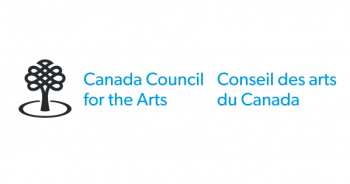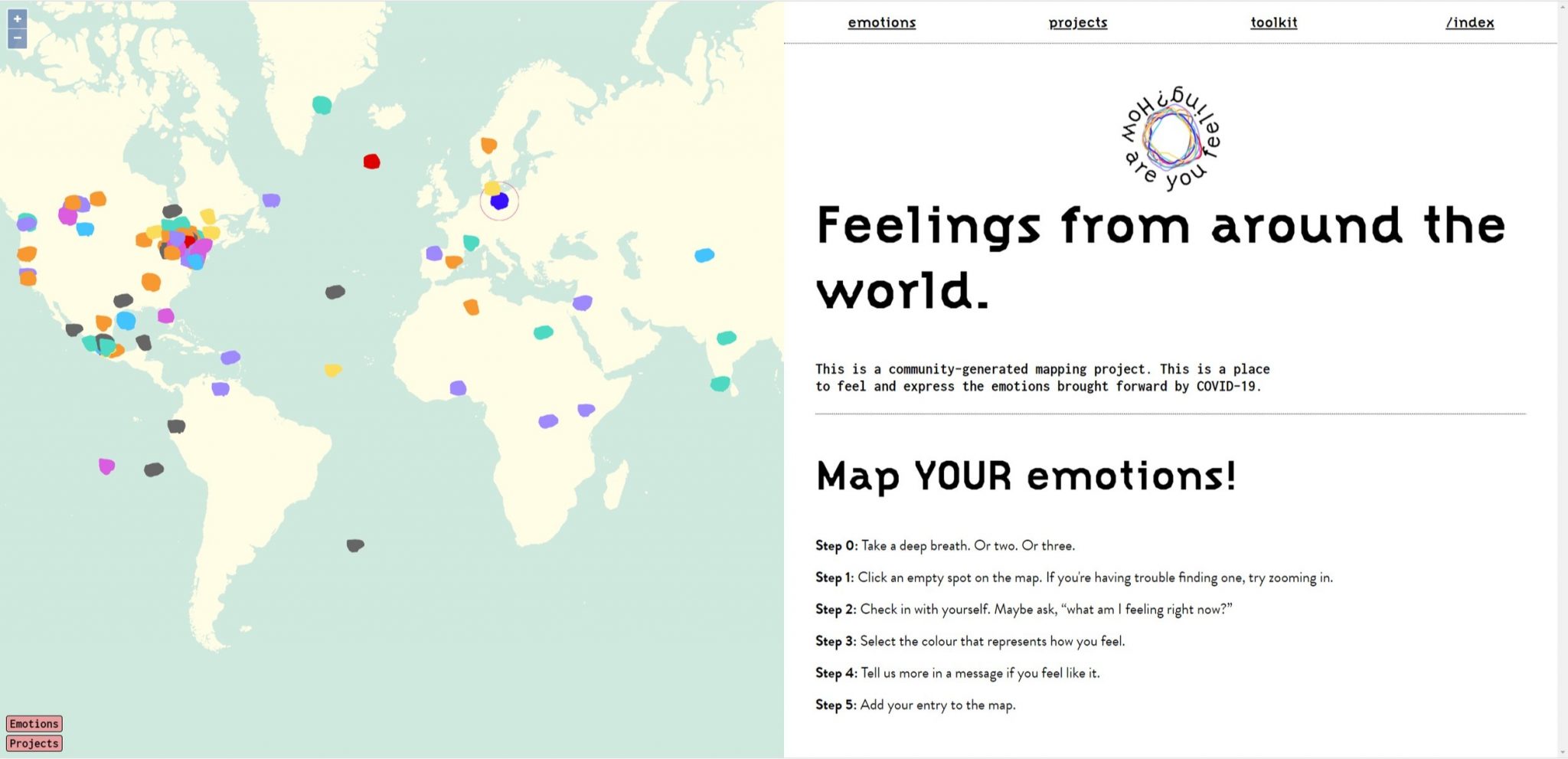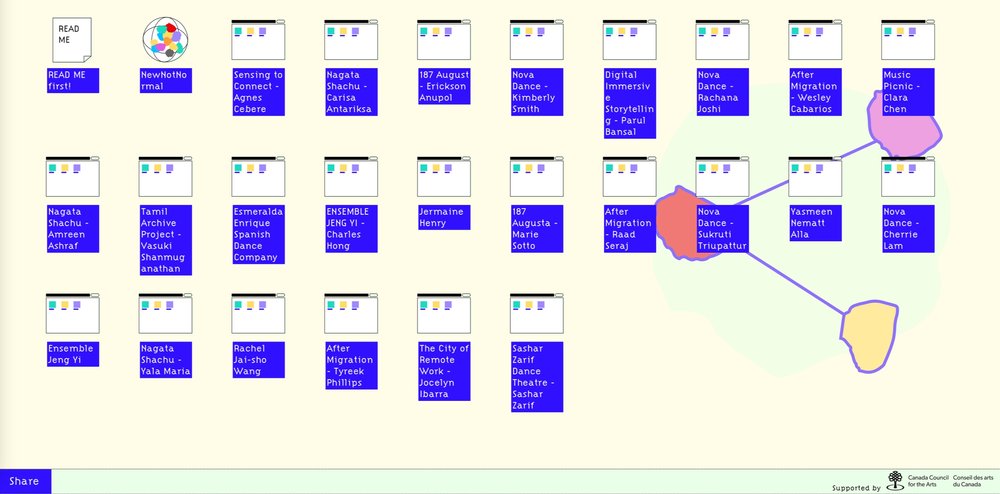New Not Normal
Overview
In March 2020, as the world finds itself increasingly under lockdown in response to a novel coronavirus , we see a mass exodus from the world of the real to the world of the digital.
How do we collectively make sense of what’s going on? How do we acknowledge our entangled fates through technologies that too often serve to isolate?
A Digital Home for our Emotions
This map of emotions tries to provide a means of feeling close and together while our relationships are increasingly mediated by platforms that don’t always have our best interests at heart. On Twitter, Facebook, Instagram … we are re-framed as content creators and content consumers, moved by algorithms we ourselves had a hand in shaping. Our posts and pictures, our labours of love, are used and discarded, wave after wave lost among viral trends. Corporate platforms are not our digital homes, but we have grown accustomed to seeing these extractive digital spaces as just another “normal“ we must accept.
What, however, is the new “not normal”?
New Not Normal was conceived as a digital home not only for UKAI and our community but also for the thousands of people who we will never get to know beyond their messages pinned on a map. It is a void you can yell into with no risk of hostility being directed back at you. Share your emotions and browse the emotions shared by others. Whether it is a kind of joy inappropriate to express in a time of sorrow or a sadness that you have no choice but to carry, New Not Normal is a home where these emotions might live.
Artists Response in a Time of Emergency
New Not Normal was inspired by the Hart Island Project and Queering the Map, evidence of digital storytelling leading to real-life impacts. Our lives and passing emotions aren’t simply recorded in a database. This is true when insisting on the dignity of the unclaimed dead. This is true when populating a mundane cityscape with stories of love and loss.
Artistic responses to the pandemic offer ways of knowing the world that differ from the rational and scientific data that pushes its way to the front of our attention. When normal life is put on hold, what else might we do beyond counting the dead and reading infection data that we can’t reasonably understand? The works gathered through New Not Normal offer portals into other people’s lives, and they help make sense of the pandemic in human terms. Artistic responses to those left behind during our digital exodus offer hope that creativity can make things better and that returning to a “normal” that fails to serve so many is not an inevitability.
Residencies
Three residencies were launched as responses to and as parallel tracks for New Not Normal as soon as the lock-down in March 2020 began.
Corporate and commercial platforms were not ideal homes for artists to occupy, particularly those used to live performance or analog production. The world shifted toward digitally-mediated work and presentation. The residencies on New Not Normal served as ways to distribute resources to artists and organizations disproportionately impacted by this shift while creating spaces to explore how the digital might be repurposed to new uses. For example, culturally-specific non-Western performance organizations had a chance to work with multidisciplinary teams to imagine and prototype future digital infrastructure suitable for their creative processes.
This project is generously supported by:



